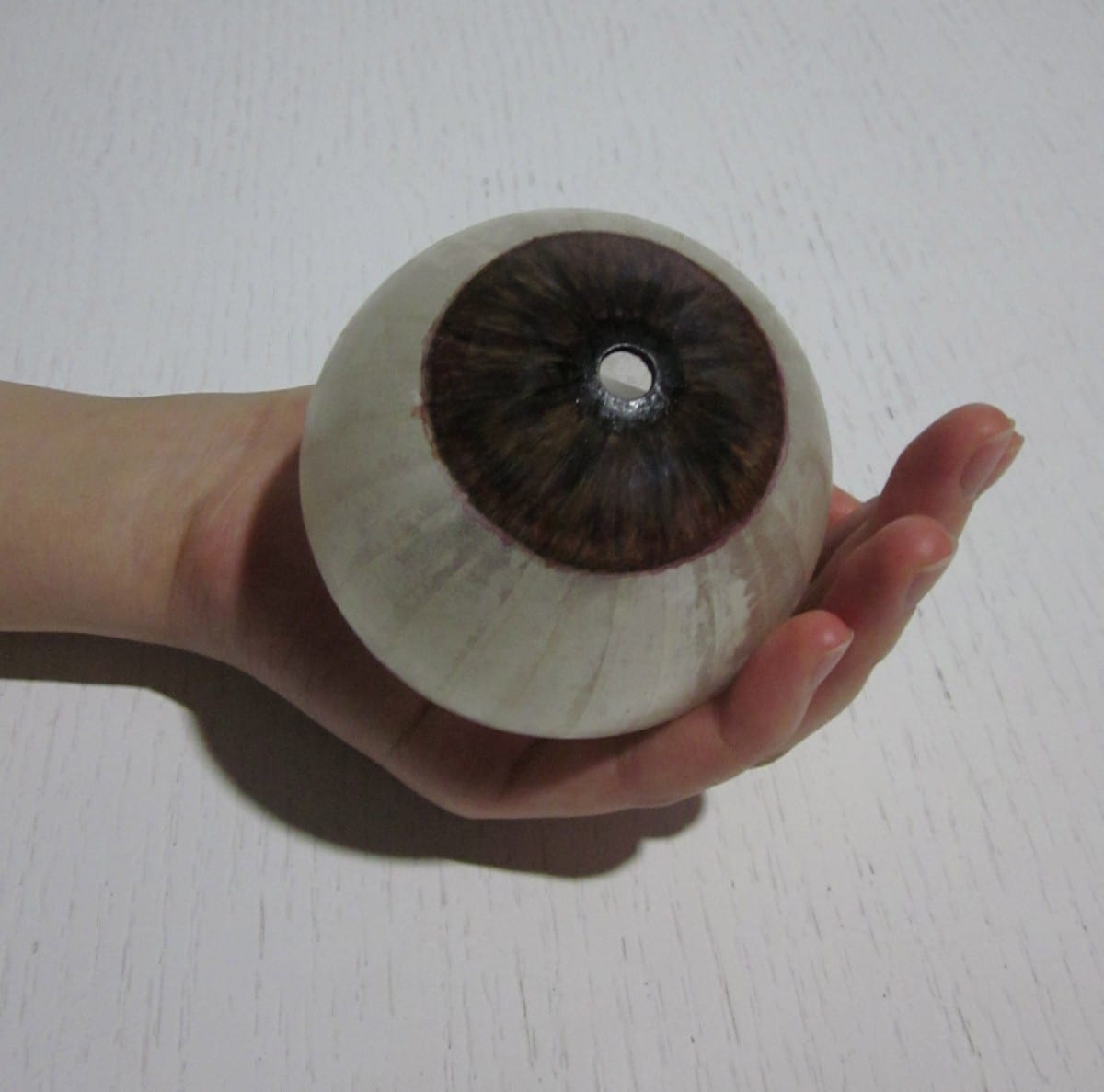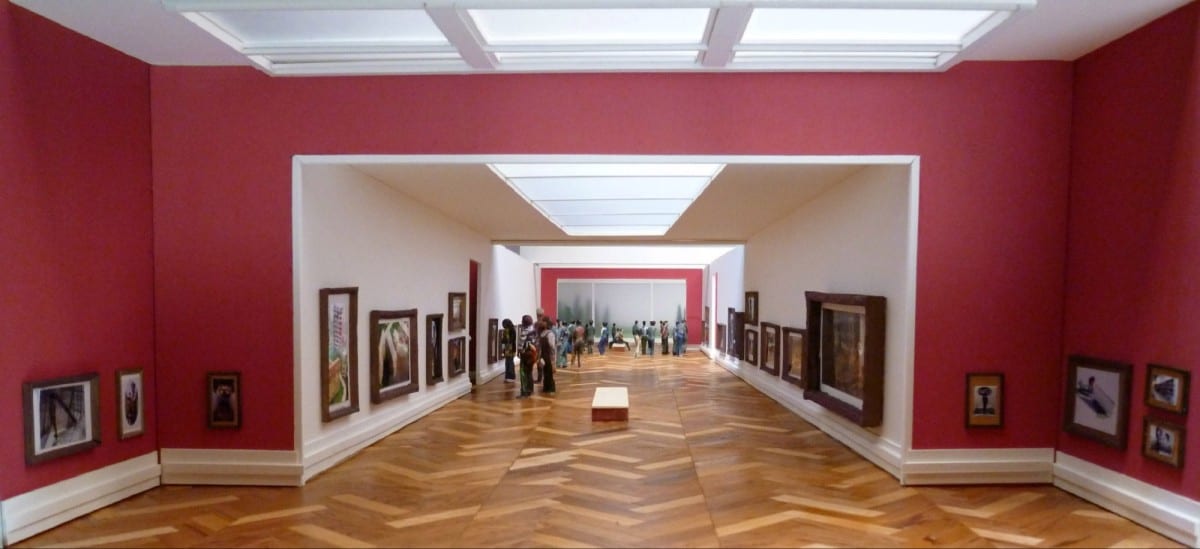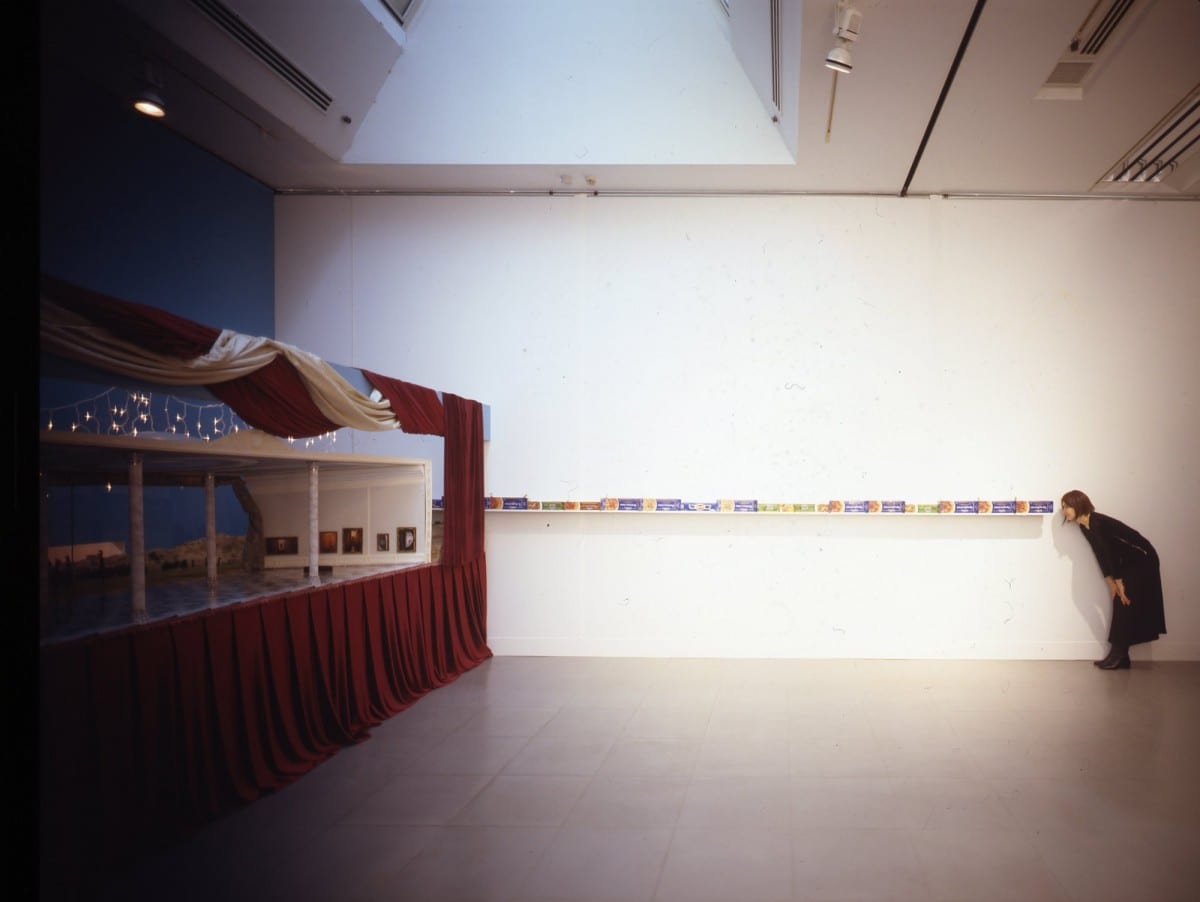In the Institute of Intimate Museums, Kenji Sugiyama restricts the viewer to a smaller visual field and invites a great attention to detail—the pattern of the floors, the surface of the walls, and curated artworks on the walls are contained within a housing that resembles an eye. Sugiyama’s practice is an experience of meta viewing as it recalls the memory of visiting a museum space while visually engaging within a miniature, intimate museum created by the artist.
Installation Magazine: When did you first become interested in the role of optics in art?
Kenji Sugiyama: I have had this idea since I was a university student. In the series Inside Outside, which started in 1995, I had the goal of conditioning and restricting the way of viewing, and put those ideas in concrete form.
Have you always worked in a miniature scale?
No. Until 1998, my work was focused on large-scale installation.
What do you think the relationship is between art and the body? How do you feel your artwork engages the body, and what effect do you hope to have on the viewer?
I think there is a strong relationship between art and the body. The impression we get from seeing huge works from the outside and inside is different to the one we have by picking up small works to gaze into it alone. The process of seeing in my work is connected to personal memory, as it is tiny enough for viewers to see one by one. Also, what becomes visible differs based on the viewer’s eyesight and experiences. Hopefully, each person has a different view and impression on museums through which they will see my work.
Are all of the Intimate Museums encased on a sculpture that resembles the human eye?
Yes. Each work is added to the series and becomes a part of it, like a nesting doll. The Third Eye is the progressive presentation of my research on the idea of “seeing.” By gazing into the eyeball, the viewer first sees a museum, and, at the end, their own eye through the mirror inside the eyeball. As it is impossible to take a picture of that experience, the viewer cannot see the illusion without “seeing”.

The title of the series has two meanings—it is personal because of its scale, but also creates a personal experience for each viewer. In what ways do you think we can make the museum experience “intimate?”
Viewers create their own museums from my work by remembering the museums that they have visited before and reconstructing that memory in their minds. What viewers see depends on their attention area, their eyesight, and their past experiences in similar spaces. In other words, each museum looks different to each viewer.


At SCOPE 2012, Institute of Intimate Museums was presented in a series of pasta boxes. Using a quotidian, mass-produced material like a pasta box, were you in any way suggesting that the museum space can exist anywhere?
By constructing intimate and personal museums inside well-known, mass-produced commercial packaging, the line drawn between public items and personal items is blurred. I wanted to make artwork in which viewers can enjoy a juxtaposition of the two.

What feelings, attitudes, or messages do you feel is inherent to a museum space?
For me, the museum space is where I can give attention to works on display in silence.
The viewer is restricted to a smaller visual field and invites a great attention to detail—the pattern of the floors, the surface of the walls, and curated artworks on the walls. What inspired the series?
I reference various museums and exhibition views in the world from the Internet and photo collections. I have also been interested in architecture since university. Honestly, I really enjoy making my work.
What is the typical amount of time spent on completing each museum?
Sometimes it can be done quickly if I already have a certain idea of what I am doing. Sometimes, I can’t decide on a layout, construction, or design, and thus have difficulty completing my work. In addition, sometimes I need to retouch my work after its completion. The Third Eye took about three weeks, while the Viewer took about two or three months.
Are they meant to reference real or imaginary spaces?
I use examples from various museums to create my own image of a museum.
Are the artworks presented in miniature format reflective of your actual work? If so, what works are represented?
I am conscious of regarding my tiny works not as miniature, but as life-size.
What’s next? What projects are you currently working on? Do you have any exhibitions planned?
These days, the virtual world is coming closer to reality, such that people can easily see impossible images and scenes. It is like a dream of which they are unaware. I would like to express the virtual feeling through a low-tech method by creating a dream that people can see and know, “Oh, I am now dreaming.” I will have more exhibitions in 2014: one in Miami in January, and another in Bangkok, Thailand in February. I will also participate in an art fair in London next March.
Featured Image: Kenji Sugiyama, Institute of Intimate Museums / The Third Eye (interior), mixed media (plastic ball, Japanese traditional paper mirror), 3” dia., 2011

Kenji’s world gives the viewer the opportunity to experience the artwork rather than focusing on his surroundings … an intimate experience in a public space.